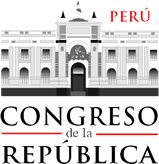The Broad Front for Justice, Life and Liberty, or simply Broad Front, is a major political coalition of parties, political organizations, social movements and activist citizens of Peru whose main objective is to consolidate the different leftist, progressive, socialist and communist sectors.

Martha Gladys Chávez Cossío de Ocampo is a Peruvian Fujimorist politician and lawyer. A historical and a prominent figure of Fujimorism, she has served in Congress for six-non consecutive terms from 1995 to 2006 and from 2011 to 2016, and since 2020 to finish the 2016–2021 that was interrupted by the dissolution of Congress. In the 2006 elections, she ran for the presidency, running on the Fujimorist Alliance for the Future ticket, but she lost, placing fourth in the election.
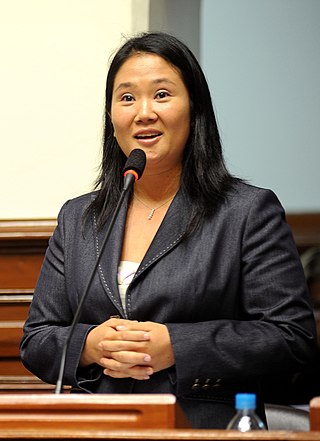
Keiko Sofía Fujimori Higuchi is a Peruvian politician. Fujimori is the eldest daughter of former Peruvian president Alberto Fujimori and Susana Higuchi. From August 1994 to November 2000, she held the role of First Lady of Peru, during her father's administrations. She has served as the leader of the Fujimorist political party Popular Force since 2010, and was a congresswoman representing the Lima Metropolitan Area, from 2006 to 2011. Fujimori ran for president in the 2011, 2016, and 2021 elections, but was defeated each time in the second round of voting.

Luis Fernando Galarreta Velarde is a Peruvian Fujimorist politician and a former Congressman representing Lima between 2006 and 2020. He was President of the Congress for the 2017–2018 annual term. Galarreta was part of the presidential ticket of Keiko Fujimori in the 2021 elections that lost the elections to the Pedro Castillo ticket, however, he was elected to the Andean Parliament.

Popular Force, known as Force 2011 until 2012, is a right-wing populist and Fujimorist political party in Peru. The party is led by Keiko Fujimori, former congresswoman and daughter of former President Alberto Fujimori. She ran unsuccessfully for the presidency in the 2011, 2016 and 2021 presidential elections, all losing by a narrow margin.
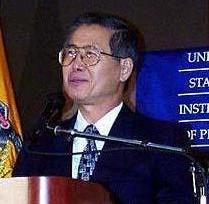
Fujimorism denotes the policies and the political ideology of former President of Peru Alberto Fujimori as well as the personality cult built around him, his policies and his family, especially Keiko Fujimori. The ideology is defined by authoritarianism, its support for neoliberal economics, opposition to communism, and socially and culturally conservative stances such as opposition to LGBT rights and school curriculums including gender equality or sex education. Opponents of Fujimorism are known as anti-Fujimorists.

Omar Karim Chehade Moya is a Peruvian lawyer and politician. He worked as consultant lawyer in the Ad Hoc Anti-corruption Prosecution in judicial cases against former president Alberto Fujimori and his intelligence chief Vladimiro Montesinos. He was the Second Vice President of Peru in Ollanta Humala's presidency from 2011 to 2012.

Peruvians for Change was a centre-right party in Peru.
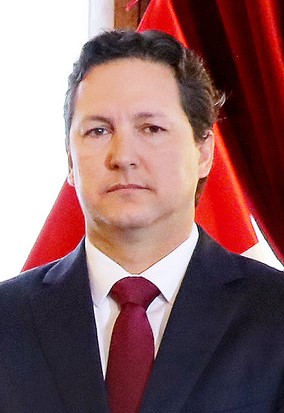
Daniel Enrique Salaverry Villa is a Peruvian architect, businessman and politician. Between 2016 and 2019, he served in Congress representing the Department of La Libertad. Elected to Congress under the Fujimorist Popular Force party, he was the party's spokesperson for a year, and was President of the Congress from 2018 to 2019. He ran as a candidate for the presidency of Peru for the We Are Peru party in the 2021 general elections.

Martín Alberto Vizcarra Cornejo is a Peruvian engineer and politician who served as President of Peru from 2018 to 2020. Vizcarra previously served as Governor of the Department of Moquegua (2011–2014), First Vice President of Peru (2016–2018), Minister of Transport and Communications of Peru (2016–2017), and Ambassador of Peru to Canada (2017–2018), with the latter three during the presidency of Pedro Pablo Kuczynski.

The Mamanivideos scandal is a political scandal that occurred in Peru in 2018 as part of the currently ongoing political crisis. It followed the release of videos filmed by Congressman Moisés Mamani showing opposition congressmen offering construction projects and special access to the presidency to help President Pedro Pablo Kuczynski avoid impeachment; this resulted in the resignation of Kuczynski.

Since 2016, Peru has been plagued with political instability and a growing crisis, initially between the President, Pedro Pablo Kuczynski and Congress, led de facto by Keiko Fujimori. The crisis emerged in late 2016 and early 2017 as the polarization of Peruvian politics increased, as well as a growing schism between the executive and legislative branches of government. Fujimori and her Fujimorist supporters would use their control of Congress to obstruct the executive branch of successive governments, resulting with a period of political instability in Peru.

General elections were held in Peru on 11 April 2021. The presidential election, which determined the president and the vice presidents, required a run-off between the two top candidates, which was held on 6 June. The congressional elections determined the composition of the Congress of Peru, with all 130 seats contested. The election experienced increased political polarization, with conservative parties embracing far-right politics and the media in Peru attacking left-wing candidates.

Vicente Antonio Zeballos Salinas is a Peruvian politician who served as Prime Minister of Peru from September 2019 to July 2020, under President Martín Vizcarra's administration. Prior, he served as Minister of Justice and Human Rights.

The 2019–2020 Peruvian constitutional crisis began when President Martín Vizcarra dissolved the Congress of Peru on 30 September 2019 considering a de facto denial of the vote of confidence. The majority of lawmakers, opponents and Fujimorists viewed Vizcarra's actions as a "coup" or "self-coup" while some compared the event to the 1992 Peruvian self-coup. Congress responded by declaring Vizcarra's presidency suspended and appointed Vice President Mercedes Aráoz as interim president. During the evening hours, the heads of the Peruvian Armed Forces shared a photograph beside Vizcarra in the Government Palace amidst the crisis, putting forward their support for him.

Manuel Arturo Merino de Lama is a Peruvian politician who briefly served as President of Peru for six days between 10 and 15 November 2020. He also served as the President of Congress from 16 March 2020 to 15 November 2020. He was a Member of Congress (AP) representing the Tumbes constituency for the 2001–2006, 2011–2016, and 2020–2021 terms.

The impeachment process against Martín Vizcarra began in the Congress of Peru on 11 September 2020 when Congress initiated proceedings against Vizcarra on grounds of "moral incapacity", accusing him of influence peddling after audio recordings were released by an opposition legislator alleging that Vizcarra's political decisions were swayed by an obscure singer.

On 7 December 2022, President of Peru Pedro Castillo attempted to dissolve Congress in the face of imminent impeachment proceedings by the legislative body, immediately enacting a curfew, illegally establishing an emergency government in which he would rule by decree and calling for a constituent assembly in violation of Article 206 of the Constitution of Peru. Attorney General of Peru Patricia Benavides, in violation of Article 117 of the Constitution of Peru, had previously said that Castillo was the head of a criminal organization and called on Congress to remove him from office, with legislators then attempting a third impeachment of Castillo. Citing the actions of Congress obstructing many of his policies during his administration, Castillo argued that the legislative body served oligopolic businesses and that it had allied itself with the Constitutional Court to destroy the executive branch in an effort to create a "dictatorship of Congress". He also called for the immediate election of a constituent assembly with some calls for the creation of a constituent assembly existing since the 2020 Peruvian protests.
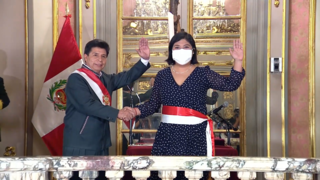
The third presidential vacancy (impeachment) process against President Pedro Castillo was an action initiated by the Congress of the Republic of Peru with the purpose of declaring the "permanent moral incapacity" of the President of the Republic, Pedro Castillo, under Article 113 of the Political Constitution of Peru.





